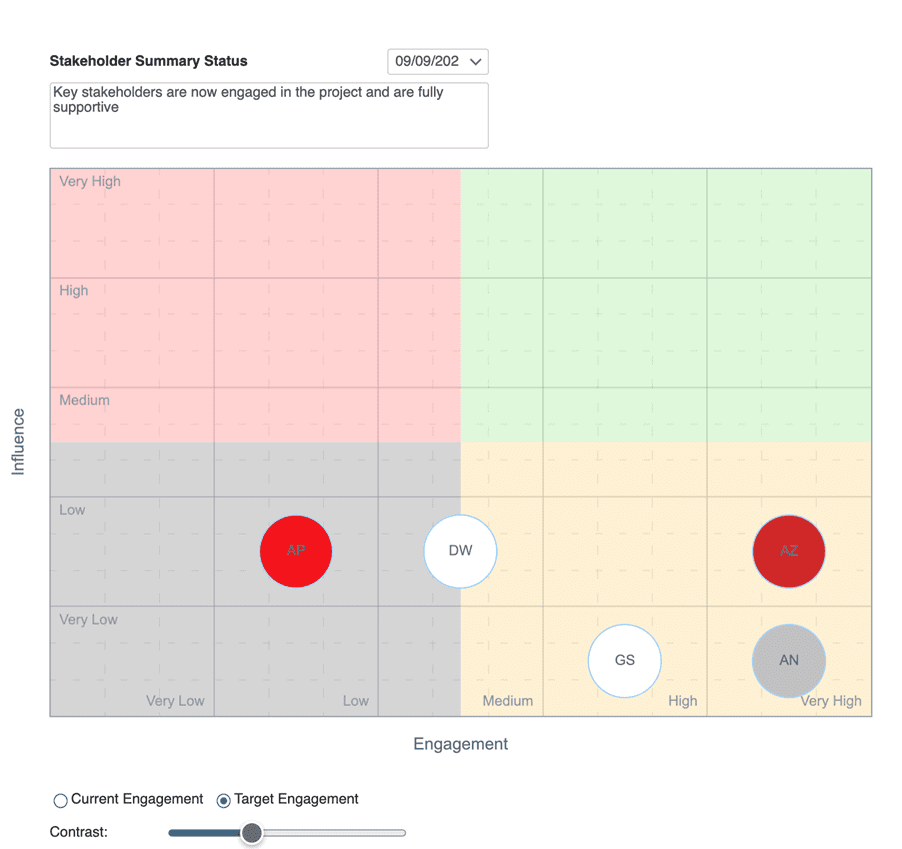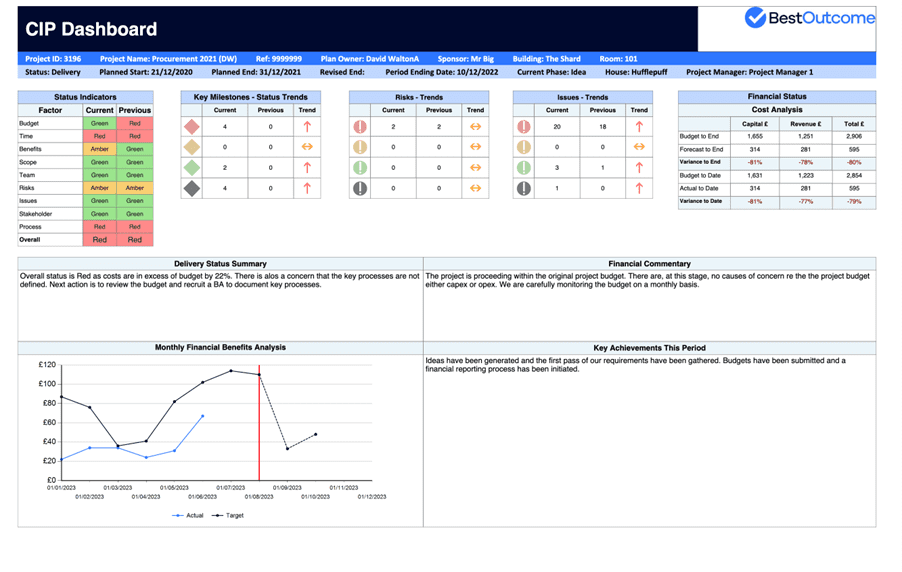Why do cost reduction programmes matter today?
We recently heard the startling news that Birmingham Council has declared itself bankrupt. The council for the UK’s second city, which serves more than 1mn people, said that it had issued a section 114 notice owing to “unprecedented financial challenges”.
A number of other councils are in similar dire straits financially. What is needed in these situations is a proactive recovery plan or a cost reduction plan.
This article describes how to:
Cost Reduction Programme – the Planning
The first task of a cost reduction project manager is to understand the scale of the task and amount that needs to be saved in the current financial year and future years.
Whatever the amount of cost saving that is required, it is an uncomfortable situation to be in and some personnel will create barriers to prevent some cost savings being realised.

The scope of the project needs to be understood as there may be some areas of council operation that are sacrosanct and are ring-fenced.
Of course, the more areas that are ring-fenced, the more challenging any significant cost reduction target will be.
As in any project the sponsor needs to be someone who is senior enough to help drive through uncomfortable change and has the skills to do so. Ideally, this should be the Chief Executive Officer.
During the project there will be uncomfortable questions needed to be asked and there will be some resistance to some cost reduction activities. After the objectives and scope of the cost reduction project have been agreed and signed off, a number of important change management activities need to be carried out. These include:

Cost Reduction Programme Tools
A Cost reduction programme needs to be run using a Project, Portfolio Management tool (PPM) rather than the usual spreadsheet system that is often employed.
It is important to have one version of the truth and an accurate report on what cost reductions are being realised by each project.
In most cost reduction programmes costs will need to be cut from many different departments and it is important to have a consistent view of all the cost reduction initiatives, including an overall summary. Having this information in one or multiple spreadsheets is error prone and unwieldy.
Below is an example of a cost reduction report using PM3.

Generic Cost Cutting Measures
Every cost reduction programme will be unique, but there will be some activities that need to be considered in any cost cutting programme. This section details some generic activities that could be carried out.
It is easy to cut costs, but it is harder to cut costs that don’t damage the services that a local authority provides.
One apocryphal story demonstrates this:
A large US car producer was in the process of an aggressive cost cutting programme and many activities and projects were being axed; some without a great deal of thought on the consequences of doing so.
The main focus being on the dollars being saved.
At the Board Meeting one of the directors stated that he had a great way of saving huge amounts of money. The other directors all turned and asked, what his plan was. Simple, he said, let’s stop making cars!
The other directors then realised that the cost reduction programme was not focusing on the consequences of cutting costs merely the numbers.
Clearly the consequence of not making cars would mean the end of the company although a lot of cost would be saved!
The point of this story is that you need to be careful on what you cut and the consequences of any cost cutting activity must be assessed.
Impact Assessments on Public Services
Our public sector clients that use PM3 to run cost reduction programmes use our impact assessment module.
For every project or cost cutting activity, local authorities need to conduct an assessment on the impact on services and the residents.
These impact assessments need to be approved before the cost cutting initiative can be taken forward. These impact assessments are a great way of ensuring cost cutting is carried out without a detrimental impact on services.
Project Cuts
Every local authority will be running a portfolio of projects. These will have differing cost, benefit profiles and return on investment.
Projects typically cost significant amounts of money and each project needs to be reassessed in case they can be stopped or descoped.
Again, the right projects need to be stopped. The process of reviewing projects needs to be objective and not subjective.
Too often, pet projects are prioritised over other more beneficial projects. This is another area where a PPM tool can help.
Below is an example of a project priority matrix screen in PM3. The bottom left of the screen displays projects that are of low value and high risk, i.e., the bronze section.
A project value is determined by objectively assessing each project against the strategic objectives of the local authority.
The top right of the matrix displays the reverse, i.e., projects that are high value and low risk.
On the right-hand side, the screen displays the benefit contribution of each project and the overall cost.
The second priority matrix screen shows the relative cost of each project by the size of the bubble.
This will help greatly in determining which projects should be terminated and the level of cost that can be saved.


Cost Reduction Projects
As well as cutting projects that are either about to be launched or are in flight, new projects need to be created that will cut costs.
Each cost-cutting project needs to have a delivery plan and also a benefits plan. It is important to have both of these plans linked.
Activities or milestones on the delivery plan or Gantt chart will trigger the timing of some of the cost reduction activities.
Too often, the project is delayed and the Gantt chart will reflect this slippage but the benefit plan is often not replanned.
This will result in an inaccurate reporting of benefits.
In PM3, our PPM tool, we link the delivery plan to the benefit plan which ensures that the timing of the benefits or cost reductions is accurate.
In each local authority there will be specific activities or projects that need to be caried out to reduce costs. However, in most cost reduction projects the following generic activities are worth carrying out:
Stopping overtime is self-explanatory and is one of the first items to address in any cost reduction exercise.
Items 2, 3, 4 and 5 need to be carried out but the impact of any of these cost reduction activities needs to be understood.
If you are using a PPM tool like PM3, then you can look at the resource capacity by role against the demand.
This could highlight a situation where a set of contractors or consultants are underutilised. This could show opportunities to reduce contractor spend.
Of course, if a project is stopped that is being staffed by some consultants or contractors, these externals can be let go.
It is unlikely that you can stop all external spend on consultants and external parties.
What I have seen done in the past is a blanket request to all third parties to reduce their costs or daily charge-out rates.
The carrot here could be that the contractor or consultant who reduces costs can expect to have a longer relationship with the local authority.
Not all external parties will comply with this request, but some will, and this will be a way of reducing costs.
The organisations that ‘share the pain’ should get some recognition for this, e.g.:
Timesheets
Cost reduction will inevitably mean that the workforce needs to shrink.
This shrinkage may fall primarily on third parties but may also impact on permanent employees. To understand who needs to leave the organisation, you need to have data that allows you to make intelligent decisions.
Although timesheets can be culturally difficult in some local authorities, they are an important tool that enables you to analyse where people are spending their time and are they being productive.
Every person in an organisation will carry out ‘value-adding’ activities and ‘non-value adding’ activities.
Value adding activities may include: preparing accounts, working on projects, answering a help desk, etc.
Non-Value adding activities could include: meetings, administration, etc.
In a timesheet system like PM3time, you can categorise a project task as being value-add or non-value add.
Time spent on the value-added activities can be added up in pm3time and converted into a utilisation percentage, i.e. how much of a person’s time is spent on value-adding activities.
When this data is known, you can then look at eliminating or reducing these non-value activities thereby making people more productive or redeploying resources and saving cost.

Digitise Processes
After you have carried out the timesheet analysis detailed above, there may be opportunities to automate some manual functions.
This may mean in the short-term that expenditure increases but costs would decrease in the medium to long term.
Clearly, a careful review of the payback period or return on investment needs to be caried out to see if this short-term cost increase and medium cost decrease still meets the parameters or objectives of the project.
For example, our PPM tool, PM3, can automate the production of project status reports.
These are non value-added activities and, if automated, could save (PMO) analyst time and allow project managers to focus on delivering their project outcomes.
Too often in cost reduction programmes the focus is on cutting staff and activities but not automating processes.
As long as the payback period is reasonable, digitising manual processes will have a long-term improvement on a local authority’s finances.
Licenses
Software licenses are another significant cost area for any local authority. Many software licenses are Software as a Service (SaaS) which are typically monthly subscription services.
Some licenses can be terminated with a month’s notice whereas others need 60 days or longer notice to terminate.
All software license contracts need to be reviewed to see if the system is still needed and/ or whether the numbers of licenses could be reduced.
It is a mistake to cut software indiscriminately as this will probably increase the manual workload of some council staff and could lead to an increased cost in the medium term.
However, if software contracts are not reviewed regularly it is likely that some software packages are being renewed automatically but not needed.
Terminating software contracts that are no longer needed is a good way of reducing cost with no impact on services
Summary
Cost Reduction Programmes are difficult projects to carry out successfully, but they can be crucial to an organisation’s survival.
However, if you plan the project carefully, use appropriate change management activities supported by the right tools, you can deliver the cost savings required with little or no impact on front-line services.
This does, of course, depend on the size of the cot-cutting measures needed.
For more information on running cost reduction projects or using PM3 to manage your cost cutting programmes, please contact us at: info@bestoutcome.com.

Our products help you deliver successful change programmes and projects by always focusing on the overall business outcomes. Find out how our products can help you.
The level of change in the NHS is increasing and many programmes that Trusts need to deliver are Cos...
Read more >With PM3 being an important platform to deliver your Projects & Programmes there are many useful tip...
Read more >